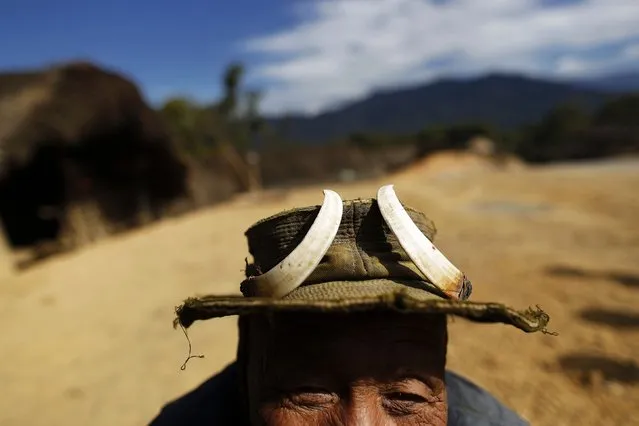
A man who claims to be 100 years old wears a hat adorned with wild boar tusks in Donhe township in the Naga Self-Administered Zone in northwest Myanmar December 30, 2014. Naga men traditionally wore animal parts such as tusks and tiger teeth, although the practice is less common now and younger men usually do so only for festivals. On Myanmar's mountainous frontier with India live the Naga, a group of tribes historically known as warriors who kept the heads of enemies they killed. In Myanmar, around 120,000 people live in the Naga Self-Administered Zone in Sagaing Division where they survive mainly by subsistence farming and hunting. Cultural practices are changing – for example, younger men now wear trousers rather than traditional loincloths – although many Naga communities remain impoverished and inaccessible by road. The Naga speak dozens of languages and many of those in Myanmar use Burmese as a lingua franca. (Photo by Soe Zeya Tun/Reuters)
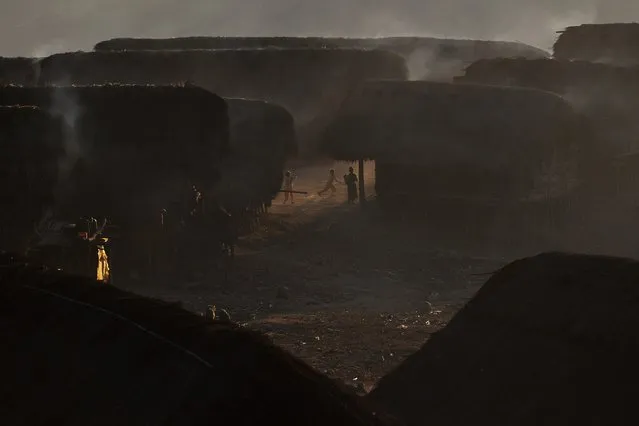
Children play between houses in Yansi village, Donhe township in the Naga Self-Administered Zone in northwest Myanmar December 25, 2014. (Photo by Soe Zeya Tun/Reuters)
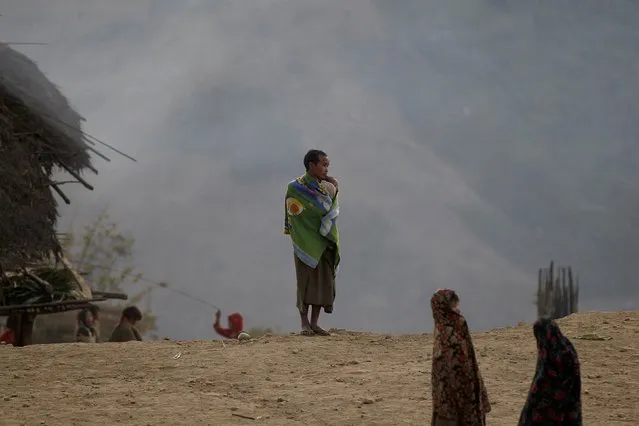
A Naga man wraps himself and a baby in a blanket to stay warm in the early morning at Yansi village, Donhe township in the Naga Self-Administered Zone in northwest Myanmar December 25, 2014. Temperatures in this mountainous region can drop to 3 degrees Celsius at night and around 10 degrees during the daytime. (Photo by Soe Zeya Tun/Reuters)
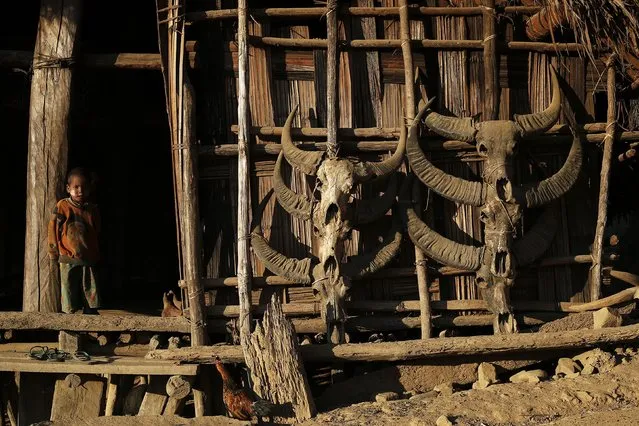
A boy leaves a house decorated with animal skulls at Yansi village, Donhe township in the Naga Self-Administered Zone in northwest Myanmar December 25, 2014. All homes in the village display skulls from animals killed during hunting expeditions. (Photo by Soe Zeya Tun/Reuters)
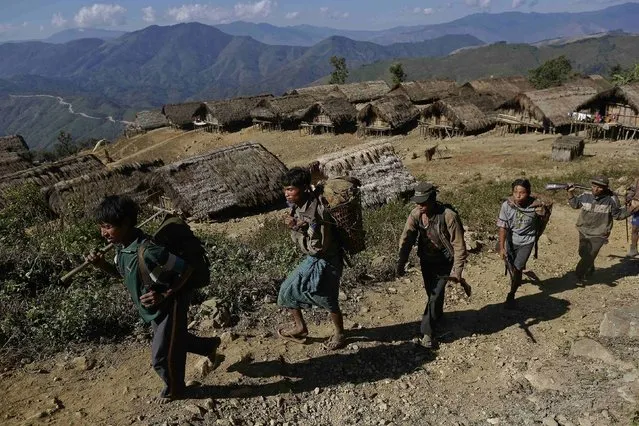
Hunters start their expedition to hunt for for deer and wild boar, to provide food for a Christmas celebration, in Yansi village at Donhe township in the Naga Self-Administered Zone in northwest Myanmar December 24, 2014. The Naga in this area are mainly Christian and regular hunting parties comprise three to 10 people. (Photo by Soe Zeya Tun/Reuters)
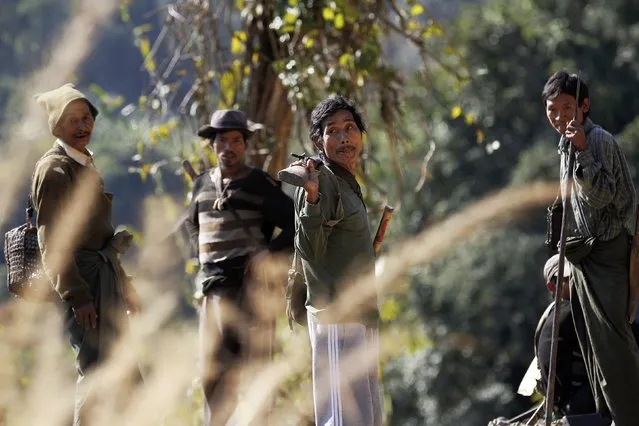
Men from the village of Upper Harwar join more than 50 other residents on a hunting expedition for deer and wild boar, to provide food for a Christmas celebration, in the Naga Self-Administered Zone in northwest Myanmar December 23, 2014. (Photo by Soe Zeya Tun/Reuters)
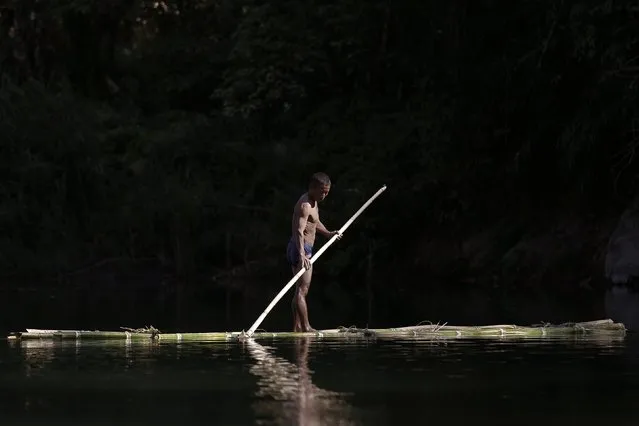
A Naga man manoeuvres a raft made of bamboo as he looks for fish stunned by dynamite which fishermen threw in a creek between Donhe and Lahe township in the Naga Self-Administered Zone in northwest Myanmar December 27, 2014. Traditionally, the Naga fish with nets or by crushing up poisonous leaves to kill fish that float to the surface to be collected but nowadays some use homemade explosive they throw in rivers. (Photo by Soe Zeya Tun/Reuters)
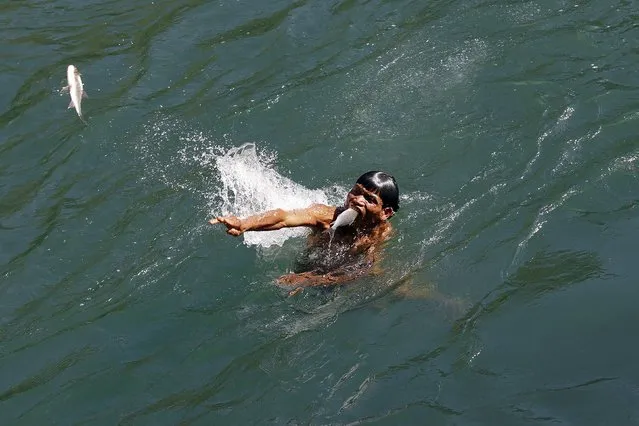
A Naga man collects fish after they were stunned by dynamite, which fishermen threw in a creek, between Donhe and Lahe township in the Naga Self-Administered Zone in northwest Myanmar December 28, 2014. (Photo by Soe Zeya Tun/Reuters)
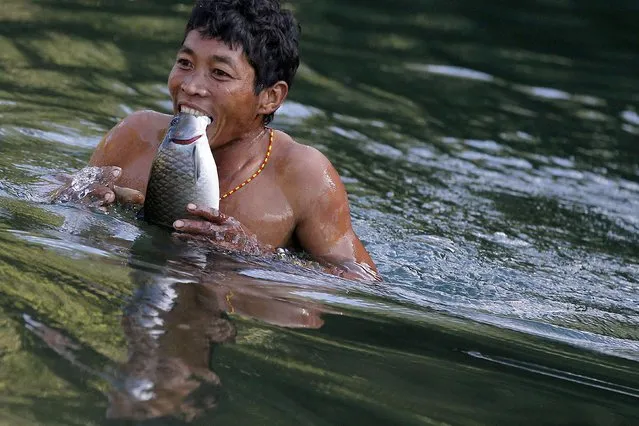
A Naga man carries fish in his teeth after it was stunned by dynamite, which fishermen threw in a creek between Donhe and Lahe township, in the Naga Self-Administered Zone in northwest Myanmar December 27, 2014. (Photo by Soe Zeya Tun/Reuters)
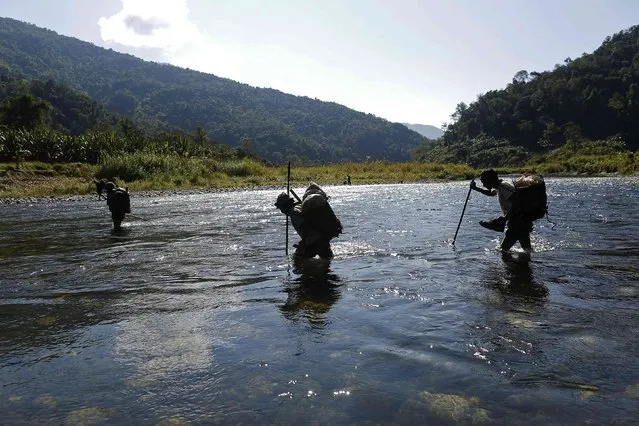
Naga men walk through a creek during a hunting trip between Donhe and Lahe township in the Naga Self-Administered Zone in northwest Myanmar December 28, 2014. The Naga in this area are mainly Christian and regular hunting parties comprise three to 10 people. (Photo by Soe Zeya Tun/Reuters)
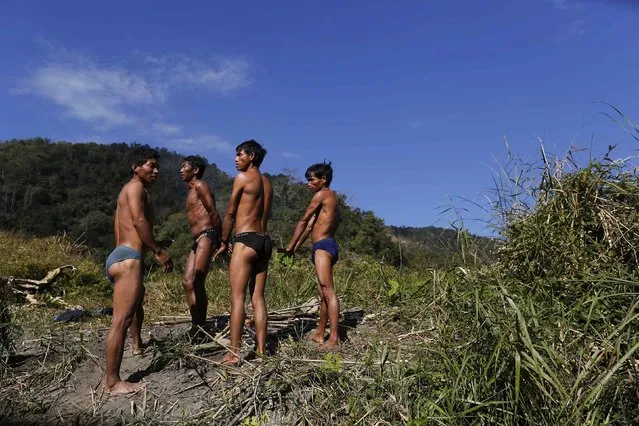
Naga men warm themselves by a fire after collecting fish in an icy creek near their hunting base camp in a opium field between Donhe and Lahe township in the Naga Self-Administered Zone in northwest Myanmar December 27, 2014. (Photo by Soe Zeya Tun/Reuters)
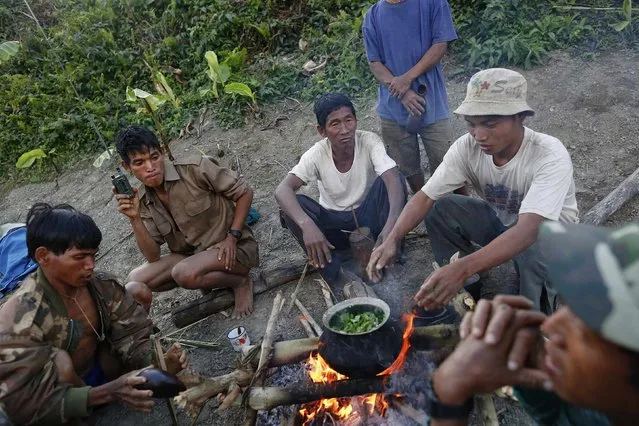
Naga men prepare dinner at a hunting base camp in an opium field during a hunting trip between Donhe and Lahe township in the Naga Self-Administered Zone in northwest Myanmar December 26, 2014. The traditional dish includes leaves from opium poppies as well as mustard, which the Naga plant in poppy fields because they say that gives it a better flavour. One man holds a walkie-talkie, used because there is no phone reception in this remote area. (Photo by Soe Zeya Tun/Reuters)
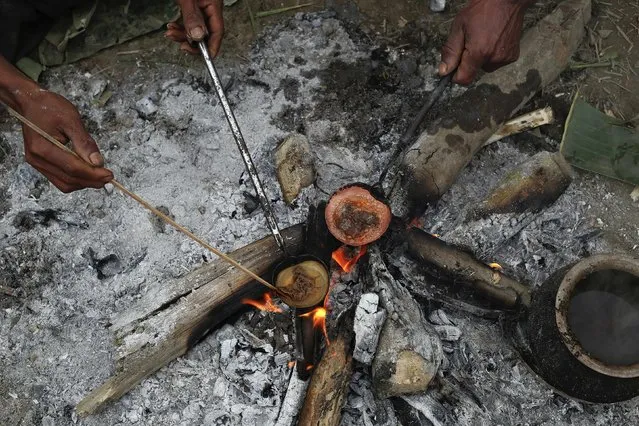
Naga men cook raw opium as they prepare it for smoking at a hunter's base in an opium field during a hunting trip between Donhe and Lahe township in the Naga Self-Administered Zone in northwest Myanmar December 27, 2014. The opium is spread on cloth to dry and then heated with water. The opium paste extracted through that process is then ready to be smoked. On Myanmar's mountainous frontier with India live the Naga, a group of tribes historically known as warriors who kept the heads of enemies they killed. In Myanmar, around 120,000 people live in the Naga Self-Administered Zone in Sagaing Division where they survive mainly by subsistence farming and hunting. (Photo by Soe Zeya Tun/Reuters)
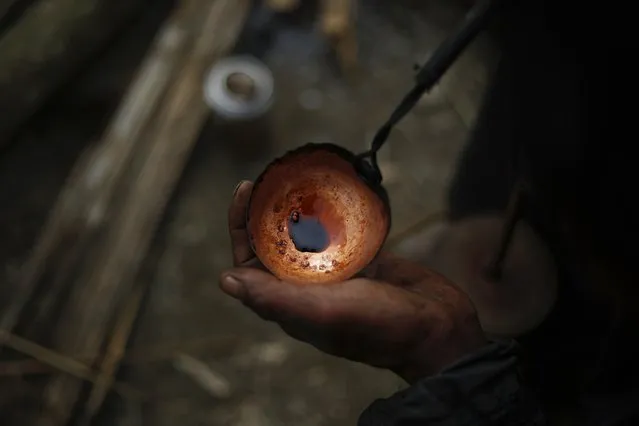
A Naga man cooks raw opium as he prepares it for smoking at hunter's base in an opium field during a hunting trip between Donhe and Lahe township in the Naga Self-Administered Zone in northwest Myanmar December 28, 2014. (Photo by Soe Zeya Tun/Reuters)
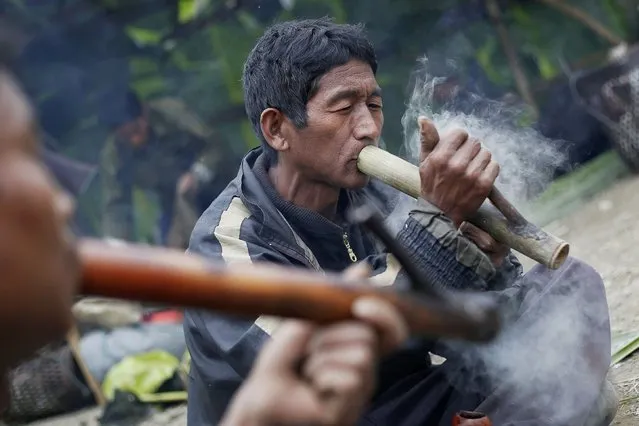
Men smoke opium from traditional pipes made out of bamboo at a hunting base camp in an opium field during a hunting trip between Donhe and Lahe township in the Naga Self-Administered Zone in northwest Myanmar December 27, 2014. The opium is harvested from poppy fields cultivated nearby and is mostly kept for local consumption, while some is traded for goods such as clothing or household items. Women do not smoke opium, but most men in the area do. (Photo by Soe Zeya Tun/Reuters)
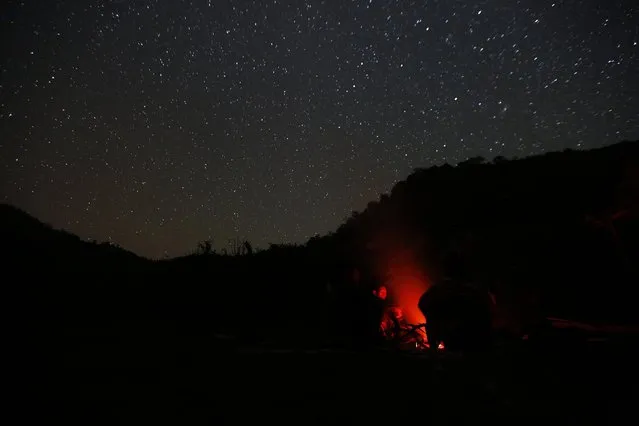
Naga men sit around a fire waiting for hunters to return with game to their camp between Donhe and Lahe township in the Naga Self-Administered Zone in northwest Myanmar December 26, 2014. While only a couple of men do the hunting, others go along to help carry game back to the village. Some smoke opium as they wait, while others sleep or tell traditional stories. (Photo by Soe Zeya Tun/Reuters)
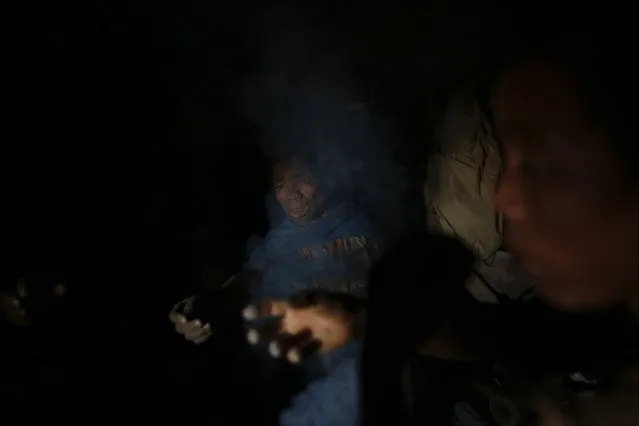
Naw Ka Kay cries near the body of her father Con Par who died in Yansi village in Donhe township in the Naga Self-Administered Zone in northwest Myanmar December 24, 2014. The man who died was at the age of 101, according to family members, although people in this area estimate age as they do not keep exact birth records. His age is inscribed on the cross, which is attached to a traditional coffin made of tree bark. (Photo by Soe Zeya Tun/Reuters)
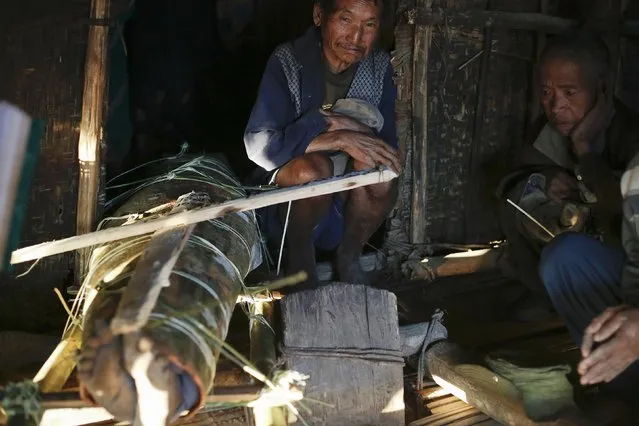
Relatives gather near the body of Con Par who died in Yansi village in Donhe township in the Naga Self-Administered Zone in northwest Myanmar December 25, 2014. (Photo by Soe Zeya Tun/Reuters)
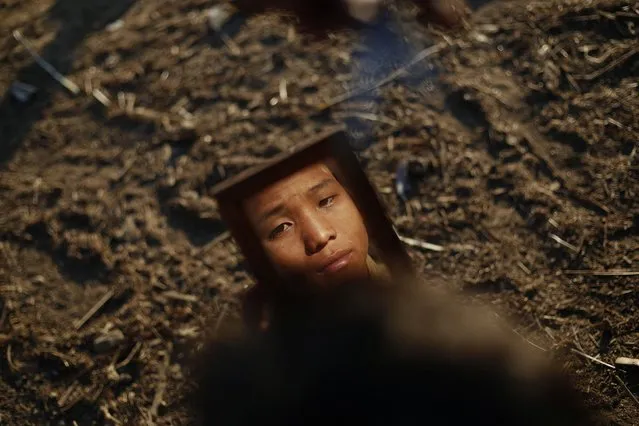
A Naga boy looks at himself in a mirror as he gets a hair cut in Yansi village, Donhe township in the Naga Self-Administered Zone in northwest Myanmar December 25, 2014. (Photo by Soe Zeya Tun/Reuters)
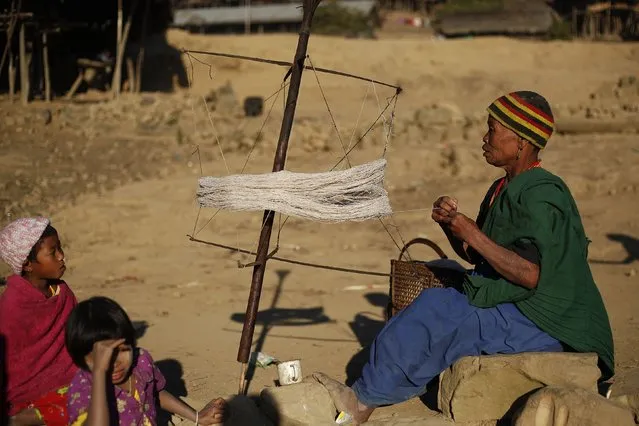
A Naga woman weaves using a traditional method in Yansi village, Donhe township in the Naga Self-Administered Zone in northwest Myanmar December 25, 2014. (Photo by Soe Zeya Tun/Reuters)
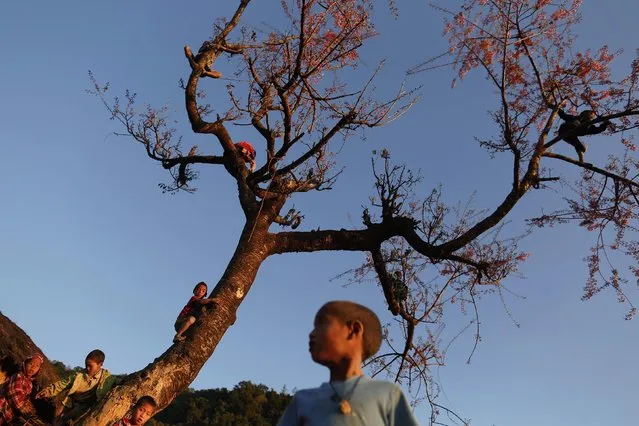
Naga boys climb a tree to collect cherry blossom in Yansi village, Donhe township in the Naga Self-Administered Zone in northwest Myanmar December 24, 2014. (Photo by Soe Zeya Tun/Reuters)
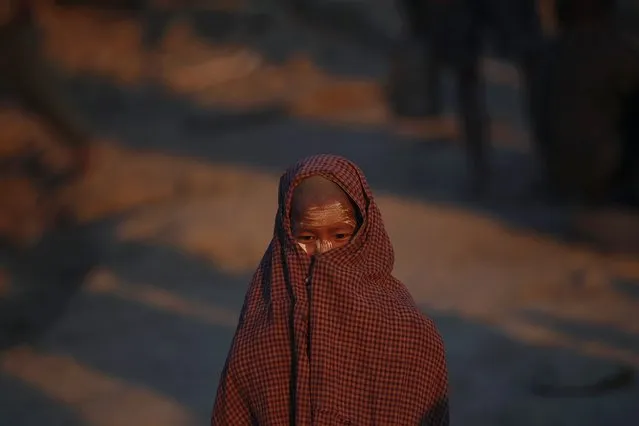
A Naga boy wraps himself in longyi to stay warm in Yansi village, Donhe township in the Naga Self-Administered Zone in northwest Myanmar December 25, 2014. (Photo by Soe Zeya Tun/Reuters)
11 Jan 2015 13:18:00,
post received
0 comments
